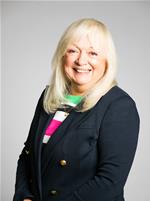Subscribe to updates
You'll receive weekly summaries about Surrey Council every week.
If you have any requests or comments please let us know at community@opencouncil.network. We can also provide custom updates on particular topics across councils.
Cabinet - Tuesday, 22 April 2025 2.00 pm
April 22, 2025 View on council website Watch video of meeting Read transcript (Professional subscription required)Summary
The Surrey County Council cabinet met to discuss the adoption of the Rights of Way Improvement Plan, the disposal of the former Chalk Pit Depot, and the month 11 financial report. The Rights of Way Improvement Plan was approved, as was the sale of the Chalk Pit Depot. The cabinet also approved a transfer of funds for waste infrastructure maintenance and a reimbursement to Waverley Borough Council.
Rights of Way Improvement Plan
The cabinet approved the adoption of the Rights of Way Improvement Plan (ROWIP) 2025-2035 and delegated decisions on the plan's delivery to the Executive Director for Environment, Property and Growth, in consultation with the Director for Environment and the Cabinet Member for Environment. The Communities, Environment and Highways Select Committee had previously reviewed the draft ROWIP and provided feedback.
The ROWIP is a statutory document that must be reviewed every 10 years. It considers the current and future needs of users, opportunities for use, and accessibility for people with mobility issues. The plan is aligned with the council’s community vision for 2030, including health and wellbeing, climate change, nature recovery, local transport, and road safety.
Councillor Marisa Heath, Cabinet Member for Environment, noted the extensive consultation undertaken for the plan, with 4,300 responses to an online survey and a 17% response rate from parish councils. She also highlighted the importance of engaging with younger people and addressing their needs.
The plan outlines four themes:
- Public rights of way for everyone
- Maintaining and protecting the network
- Future Surrey
- Communications and partnerships
Councillor Heath emphasised the importance of delivery and the need to link the ROWIP to the health and well-being agenda. She also noted the opportunity to improve connectivity and invest in signage and communication.
Several cabinet members voiced their support for the plan, including Councillor Denise Turner-Stewart, Deputy Leader and Cabinet Member for Customer and Communities, who recognised the investment in the rights of way network and the collaborative work with partners. Councillor Jonathan Hulley, Deputy Cabinet Member for Strategic Highways, highlighted the importance of enforcement to address illegal obstructions. Councillor David Lewis, Cabinet Member for Finance and Resources, welcomed the focus on clear signage to differentiate between footpaths and bridleways.
Tim Oliver OBE, Leader of the Council, noted the importance of access to green space for health and wellbeing and the role of community boards in protecting and enhancing rights of way.
Disposal of Former Chalk Pit Depot
The cabinet approved the sale of the former Chalk Pit Depot in Great Bookham, and formally declared the asset surplus to operational requirements. Councillor Natalie Bramhall, Cabinet Member for Property, Waste and Infrastructure, stated that the 0.38-acre depot yard is no longer required and has an allocation for seven units in the Mole Valley Local Plan.
Councillor Stephen Cooksey, the Divisional Member for Bookham Fetcham West, supported the disposal, noting that the site has been derelict for 25 years and its redevelopment would be a positive use.
The cabinet delegated authority to the Executive Director for Environment, Property and Growth, with the Director of Land and Property, and Councillor Bramhall to finalise the transaction.
2024/25 Month 11 (February) Financial Report
Councillor David Lewis, Cabinet Member for Finance and Resources, presented the month 11 financial report, noting a forecast overspend of £15.6 million against the revenue budget, an improvement of £1 million from the previous month. He indicated optimism that this improvement would be maintained for the end of the financial year.
The report highlighted overspends in adults, children's, and place directorates, with a focus on the children's overspend related to home-school transport assistance. Councillor Lewis noted that the overspend in this area had reduced by £1.5 million during the year.
The cabinet approved a proposal to transfer £10.66 million of funding from the capital pipeline to enable the maintenance of waste infrastructure. Councillor Lewis explained that this budget is for the maintenance of waste transfer stations and community recycling centres over the next five years.
The cabinet also approved a reimbursement of £623,000 to Waverley Borough Council related to additional council tax raised in 2023 as a result of implementing changes to the empty home policy. Councillor Lewis stated that this money was set aside in reserves and would enable Waverley to reinvest in local services.
Attendees













Topics
No topics have been identified for this meeting yet.
Meeting Documents
Agenda
Reports Pack
Additional Documents